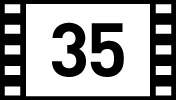

After the runaway success of Raiders of the Lost Ark (1981), George Lucas and Steven Spielberg set out to make a series of adventure films for the iconic hero they'd created in Indiana Jones. However, their second installment in the trilogy, Indiana Jones and the Temple of Doom (1984), while a major box office success, received mixed reviews from critics, audiences, other filmmakers, and even Lucas and Spielberg themselves. Temple of Doom is simultaneously a much darker and a more goofy movie than its predecessor. That uneven tone hampers the film, which was also heavily criticized for being too violent and gory for the young audience it was aimed at. Unlike Raiders' brilliant ability to mine tropes, themes, settings, and characters from the cinema of a bygone era, Temple of Doom's homages to the earlier years of Hollywood often play as racist and misogynistic. But for all its faults, Temple of Doom stands apart from so many sub-par sequels because of its willingness to try and be something altogether different from the original film, and it largely succeeds in this attempt. Rather than repeating the sweeping, globe-trotting adventure of Raiders, Temple of Doom tells a fairly contained story. The plot and style pull from narrative traditions different from those in the first movie, sprinkling elements of horror, screwball comedy, and even a musical number with the action. It feels very much in the same world as Raiders, both in terms of themes and presentation, but it doesn't remotely rehash the beats, characters, or concepts of that genre-redefining picture. In fact, it isn't a sequel at all, but rather a prequel that shows us its protagonist as a slightly younger, less formed individual—one who hasn't developed all of the guiding principles he lives by in the film where we first met him.
As if trying to compensate for the mixed reviews of Temple of Doom, Lucas and Spielberg decided to go a more risk-averse route with their third Indiana Jones installment, resulting in a film that is both satisfying and frustrating. For Spielberg, returning to the characters, basic plot, and overall vibe of Raiders was penance for what he now viewed as a personal failure with Temple of Doom. Lucas was keen on making the third Indy movie a kind of haunted house picture, but Spielberg felt he'd already mined that genre with his terrific 1982 suburban horror thriller Poltergeist. So Lucas tossed out the haunted castle script he'd developed with Romancing the Stone writer Diane Thomas, and hired up-and-coming screenwriter Chris Columbus (Gremlins, The Goonies, Young Sherlock Holmes) to start on a new script about the search for the Holy Grail. However, none of these drafts worked for Spielberg, who hit upon the idea of introducing Indiana's father into the mix. This could have been a disastrous choice, as Spielberg's penchant for schmaltzy parent/child redemption tropes has hobbled more than a few of his pictures. But, in this case, it was this very idea that saved what eventually became The Last Crusade from being nothing more than a weak retread of Raiders of the Lost Ark. Spielberg worked with screenwriters Menno Meyjes (The Color Purple, Empire of the Sun) and Jeffrey Boam (Straight Time, The Dead Zone, Innerspace). Boam's final script finds a balance of tone far more successfully than Willard Huyck and Gloria Katz's were able to with their script for Temple of Doom. In an impressive feat of assignment screenwriting, Boam—who also wrote another strong sequel released in the summer of 1989, Lethal Weapon 2—successfully blends Lucas's Grail-search narrative with Spielberg's father/son redemption story and layers in pretty much everything that audiences remembered loving from Raiders to create a script that somehow feels coherent and credible.
But what makes this movie special is the casting coup of landing Sean Connery to play Indy's Dad. Since James Bond is one of the principal spiritual fathers of Indiana Jones—in that Spielberg and Lucas were, at least in part, attempting to outdo the 007 film series with Raiders—it's hard to think of a more perfect actor than the original James Bond to play Professor Henry Jones. Boam tailored the character to Connery's persona, writing him as a stern, Victorian-tempered Scottish academic who had been a cold disciplinarian in Indy's youth. Though Connery was initially reluctant to play the part, he quickly saw the value and the fun in taking on the role. Other new characters Boam created also help distinguish this third entry from its predecessors. For the love interest, he fashioned Dr Elsa Schneider, an Austrian art professor who seduces both of the Joneses. In terms of her style, persona, or the way she serves the narrative, Dr Schneider resembles neither Karen Allen's Marion Ravenwood nor Kate Capshaw's Willie Scott. And as the only female main character in this movie, the young Alison Doody (known for small roles in A View to a Kill and A Prayer for the Dying) does an admirable job holding her own opposite two screen legends. Julian Glover (For Your Eyes Only, The Empire Strikes Back) delivers another memorable turn as Walter Donovan, an American businessman who initiates the quest for the Holy Grail. And Indy's compatriots from Raiders, Dr Marcus Brody (Denholm Elliott) and Sallah (John Rhys-Davies) both return for this adventure, as do the Nazis as the main villains.
Telling another globe-trotting tale of the Third Reich trying to recover a powerful holy relic of the Christian faith, and bringing back two much-loved supporting players from Raiders is a transparent attempt to pander to the audience in the hope of recapturing the spirit and success of the original film—an attempt that disappoints as often as it appeases. Spielberg and Boam double down on the humor of Raiders in ways that often undercut rather than enhance. In Raiders, Professor Indiana Jones had numerous female students who took his class because of how attractive he was. In The Last Crusade, all of Indy's students are frantically and absurdly obsessed with him. In Raiders, Marcus Brody and Sallah were distinguished, prominent men in their fields who intrigued us while also providing a couple of organic comedic moments, but in The Last Crusade they are played strictly for comic relief as buffoonish caricatures—Brody as an inept English stiff and Sallah as a greedy Arab lackey. Worse, the Nazis are presented in Last Crusade, not as the embodiment of evil—the quintessential antagonists of a film centred on a spiritual quest—but as cartoonish, easily thwarted villains. And all the inventive aspects of the ultimate archaeological excavation that Raiders explores with such thrilling mystique are also missing here—where major discoveries and the solving of centuries-old puzzles seem to occur every couple of scenes like a Scooby Doo mystery.
The Last Crusade opens with a sequence that sets up the film perfectly in that it both charms and infuriates. This mini-adventure features Indiana Jones as a young man, played by River Phoenix. In this single episode, we learn how Indy came to be Indy—everything from how he developed his personal style and his fear of snakes, to how he got his whip, his chin scar, and his fedora hat. With their typical reductionist, expository glee, Lucas and Spielberg shrink what audiences had previously inferred to be a lifetime of experiences that shaped the iconic character of Indiana Jones we met in Raiders down to a single half-day outing. I will never understand this fondness for diminishing the rich backstories hinted at in their original pictures into uninspired throwaway sequences in their prequels and sequels, but it is clearly something that audiences love because so much of the business of Hollywood filmmaking is now based around this practice. The disciples of Lucas and Spielberg—from Robert Zemeckis to J. J. Abrams—seem to believe that the creation of a "cinematic universe" involves narrowing an unlimited realm of endless possibilities down to the size of a backyard, where everyone pretty much plays in the same sandbox, most people are related to each other, and thirty years of character development can be chalked up to a few youthful occurrences. This now multi-decade trend is maddening—it's also one of the things that make Temple of Doom such an effective movie in that the change Indiana Jones undergoes during the course of that story is profound but so subtly presented that most viewers don't bother to notice it. Yet, as silly as Last Crusade's opening sequence is in terms of narrative, it's well executed and ideally cast. Phoenix, who played Ford's son in Peter Weir's underrated drama The Mosquito Coast (1986), not only looks like a young Ford (apart from an anachronistic haircut) but he captures the older star's mannerisms, humor, and style without ever slipping into an impression or caricature. And Spielberg shoots the sequence with his usual flair. This opening also leads seamlessly into the beginning of the story proper, so it doesn't feel tacked on.
Indiana Jones and the Last Crusade is a mixed bag, delighting and surprising as often as it disappoints with rehashed leftovers. The interplay of Ford and Connery (who share plenty of screen time) makes it a must-see, and the clever way the film keeps the central focus on their relationship goes a long way towards compensating for the shallow handling of the Grail quest and the lack of real mystery and puzzle solving.
Third instalment in the Indiana Jones series plays it safe by rehashing far too much from the original movie without Raiders' phenomenal invention, craft, and sense of discovery; but the addition of Connery makes it well worthwhile.










